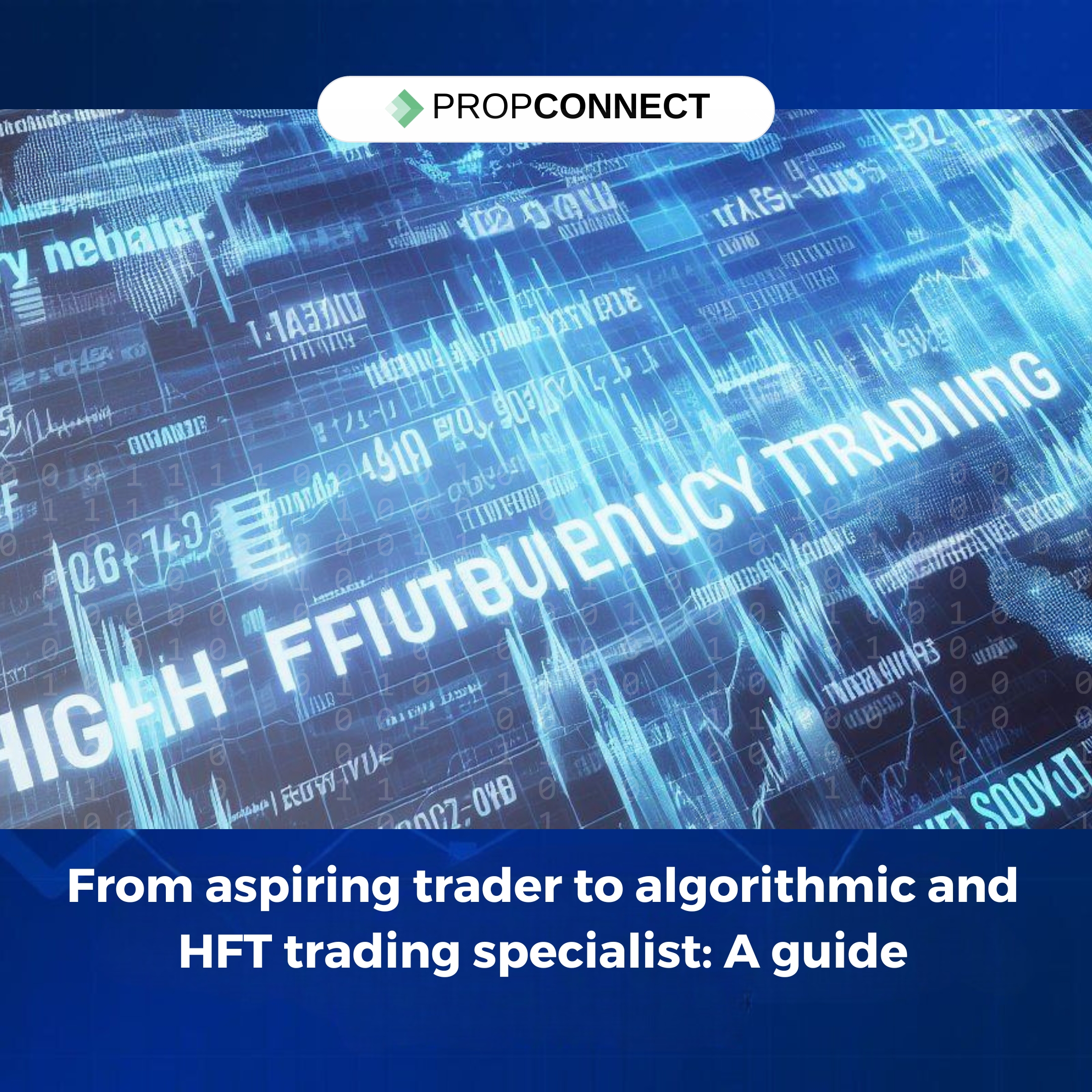Articles
From aspiring trader to algorithmic and HFT trading specialist: A guide
The practice relies heavily on proprietary trading tools and computer programs that analyze market data, detect trends, and execute trades for instant profits

High-frequency trading is a type of trade that utilizes advanced algorithms and ultra-fast connectivity to conduct ultra-fast trading in fractional seconds. The practice relies heavily on proprietary trading tools and computer programs that analyze market data, detect trends, and execute trades for instant profits. This article will look at how high-frequency trading differs from other trading strategies and give some real-life examples of how it has changed markets.
What is HFT?
High-frequency trading, commonly abbreviated as HFTa, is a trading strategy that uses advanced algorithms and very fast connections to execute rapid trades, often within fractions of a second. This is a practice that is driven largely by proprietary tools, equipped with high-tech computer programs, which are good at analyzing market data, identifying emergent trends and trading with speed that solely focuses on minute profits.
Algorithmic Trading
Algorithmic trading refers to using computer algorithms for trade execution. Such programs are programmed to collect market data, spot trends, and execute trades that are already pre-set. One other technique used together with high-frequency trading for executing orders at a high speed is called algorithmic trading.
Prop Firms
Proprietary trading firms, also known as prop firms, utilize their own capital to trade various financial instruments. The traders working for these firms are usually trained in high-frequency trading (HFT) and algorithmic trading techniques. Prop firms provide the necessary capital, technology, and other resources for successful high-frequency trading to individual investors.
Insights and Strategies
High-frequency trading requires traders to process market information at higher speeds, identify and exploit market trends to execute trades with ultra-short times. It needs an in-depth knowledge of what happens in the financial markets as well as how to trade successfully.
Statistical arbitrage serves as one useful trading strategy. This method entails detecting price disparities between the trading market and concurrently purchasing and selling correlated stocks to utilize price disparities. The other successful method is using momentum trading. With this in mind, it is a strategy that involves purchasing assets which are rising in value and selling down assets whose prices are deteriorating.
Algorithmic Trading includes trend following and mean reversion strategies. The choice of strategy reflects the trader's risk appetite, market dynamics, and the type of instrument.
Technological Advancements in HFT:
HFT and Algorithmic Trading rely on technology in their structure. They spend huge sums of money on highly advanced devices to have an advantage over their competitors. The infrastructure of HFT comprises ultra-low-latency trading systems, co-location services, and advanced data analytics. However, aspiring traders must keep abreast with the latest developments in technology so that they can remain competitive, effective, as well as efficient in the implementation of their strategies.
Success Stories
In high-frequency trading, there are many success stories. For example, an example of this is Renaissance Technologies, a hedge fund that utilizes HFT and algorithmic trading as a means of returns for its investors. It is perhaps one of the most successful hedge funds in the world, as it has managed to record average annual returns of over 70%.
The other successful story is that of Jane Street, a prop firm dealing with HFT and algorithmic trading. This prop firm has consistently made annual returns of over 20%, thereby earning it its status as one of the best prop firms in the world.
Conclusion
The financial markets present great avenues for massive returns through high-frequency trading and algorithmic trading. The success in high-frequency trading requires traders to analyze data and detect trends at extreme velocities. Prop firms supply their traders with capital, technology, and other critical elements required to prosper in the fast trading scene. With the right insights, strategies, and success stories, ambitious traders should be able to.


